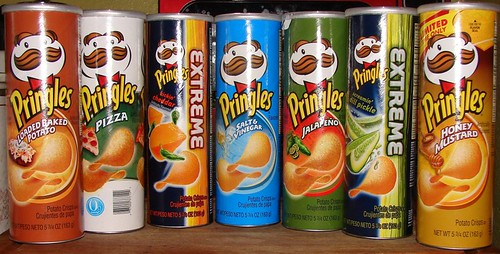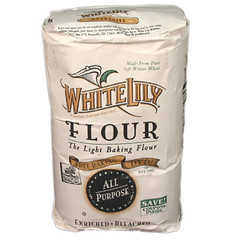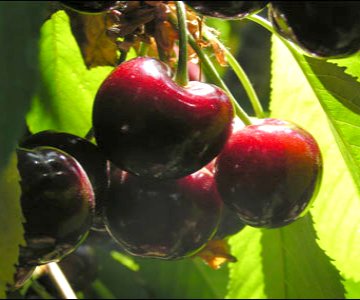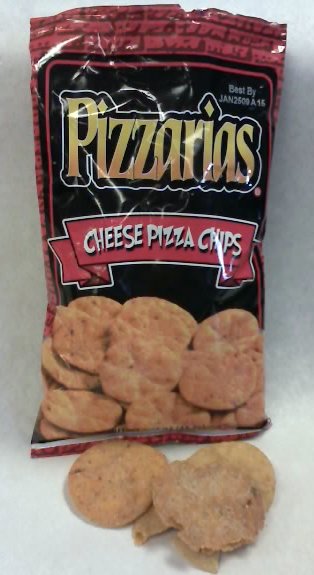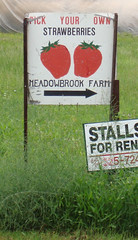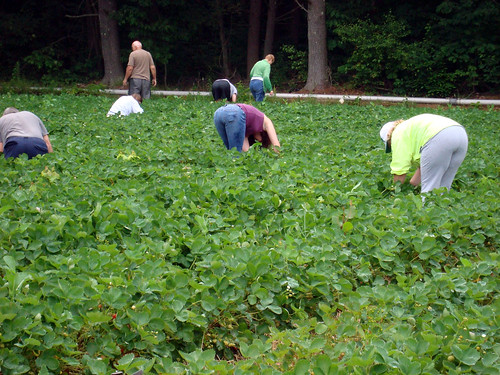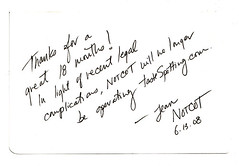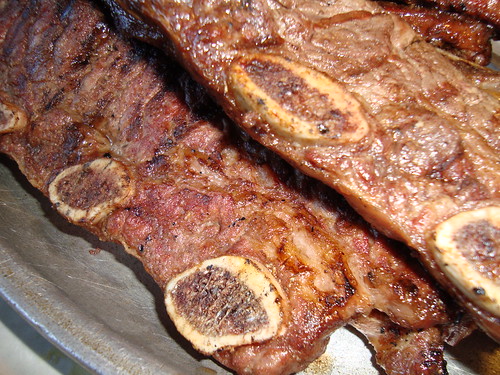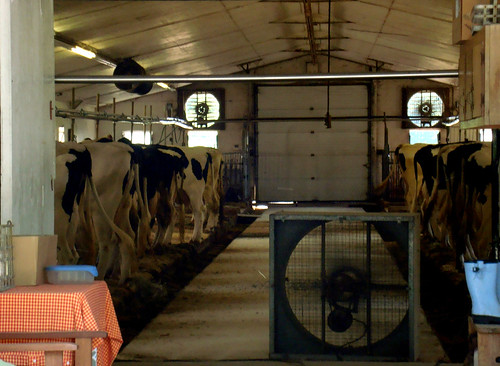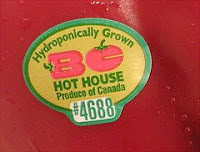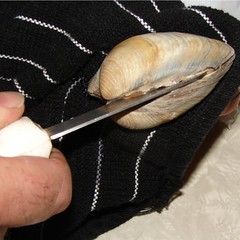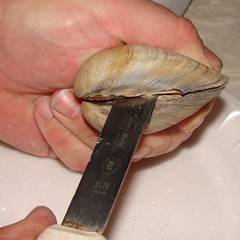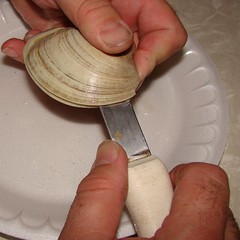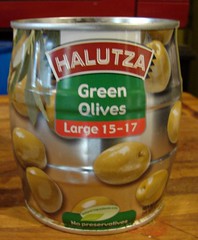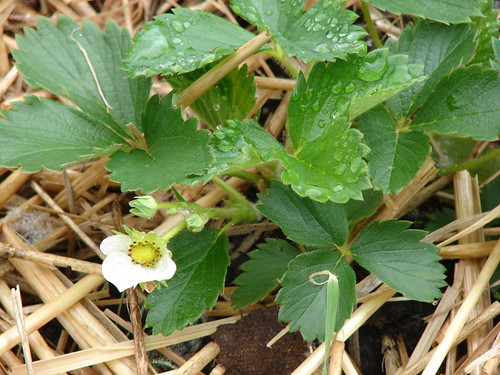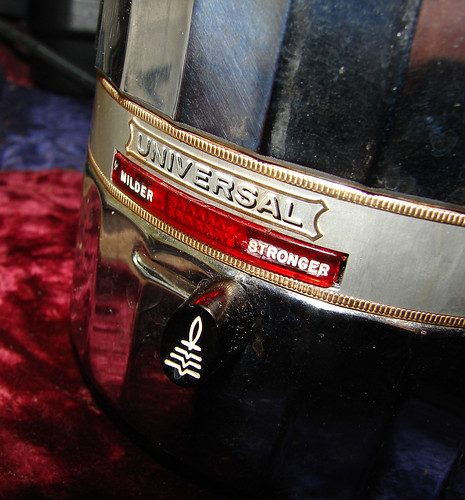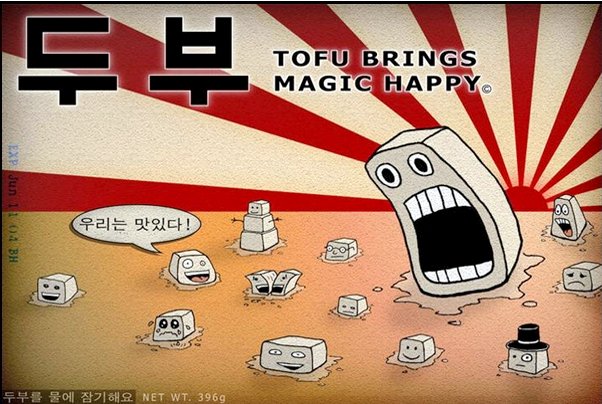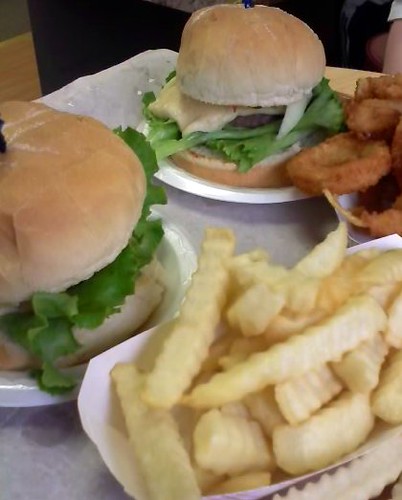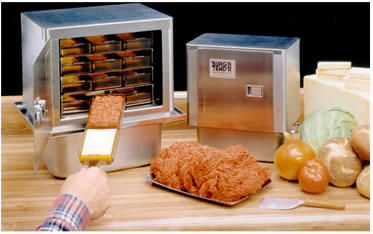Toontz, in her blog
Okara Mountain, recently wrote about her tendency to breeze on past certain items when she's grocery shopping:
I lamented to my husband that there are so many items in the grocery store that I just pass by, without even giving them a second thought, just because I have never eaten them before. Or had a bad experience with growing up. My mother, when she fried eggplant, would laugh at me because the smell would literally run me out of the house. I hate brussels sprouts, though my sister raves about them. My little darlings have never eaten a turnip, just because I have never picked one up at the grocery.
Sounds familiar, doesn't it? I think all of us do that to some degree. But
toontz decided she wants to start pushing out of her comfort zone, and she's invited us along for the ride. Welcome to the
Triple Dog Dare Challenge, a monthly event in which participants try out something new and different in a defined food category - it need not be exotic, rare, or expensive, only something one has never tried before. This month's category is
Fruit.

This one was something of a stumper for me because I actively seek out strange and unusual foods. I'm familiar with most of the items on internet-based "strange fruit" lists, and most of the supermarkets in my area don't have a very large selection of exotic produce from which to choose.
How fortunate, then, for me to find
horned melons at one of the local markets. Also known as kiwanos, melanos, jelly melons, hedged gourds, and "English tomatoes" (really?) horned melons are a bright yellowy-orange when ripe and covered with sharp spikes like a miniature durian.
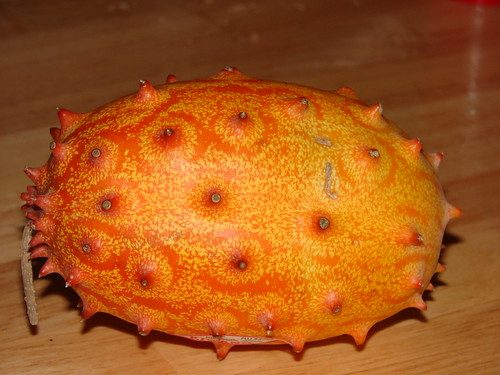
There it is, in all its lethally spiked cheery orange glory. About six inches or so from end to end, relatively heavy for its size, and covered with leathery skin studded with sharp spines, it looks more like a dog's chew toy than a fruit. (My dog thought so, too, whining and begging for it until I let him take a sniff of it and he bumped his nose on one of the spines.) I inspected the melon carefully, looking for a way in, but there were no obvious entry points, seams, or bits that looked peelable, so it was off to the cutting board.
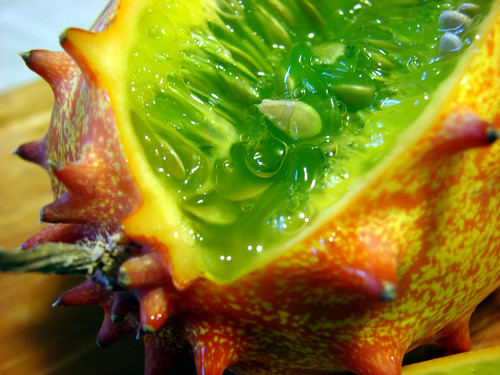
I cut a long wedge from the melon, end to end.
Holy crap, it's green inside!! And filled with seeds that look remarkably like those from a cucumber. Except that cucumber seeds aren't individually surrounded by ectoplasmic blobs, which is what seemed to be the case within this alien-looking melon.
I gave the wedge a tentative squeeze and the little seed blobs popped out from pore-like pockets along the skin of the fruit. It looked, quite frankly,
disgusting. But what the hell - I've put worse-looking things in my mouth, so I sucked up a mouthful of the blobs and kind of rolled them around my tongue.
I wasn't sure I could eat the seeds or not, so I kind of pushed the seeds out through my teeth while retaining the blobby fruit part in my mouth. I spit the seeds out and chewed away at the pulp. It's rather resistant to tooth damage, but chewing does release some juice and flavor, and I guess the point is to extract as much of the flavor of the melon as possible before finally swallowing the pulp and going for another mouthful of ectoplasm.
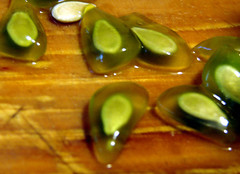
I can't say the flavor was anything very exciting. It was sort of cucumbersome, with a tart green kiwifruit overtone, but I also noted a rather subtle and unpleasant fishiness. This, combined with the slimy frog's-egg texture, made for an experience which I don't regret but won't repeat.
For every cloud there is a silver lining, however, and in this case the silver lining is Sid, our Amazon parrot. He thoroughly enjoyed a slice of horned melon, carefully removing each gooey seed pod and eating first the seed (his favorite part) and then the bright green pulp. When he had completely removed all of the seeds, he proceeded to eat all of the pulpy membrane inside the skin, then flipped the skin over and
ate all of the spines from the exterior. By the time he was done, there was naught but a thin rubbery layer of bright orange exterior skin with lots of beakmarks along the edges. I may never buy another horned melon for myself, but I might pick one up for an occasional treat for Sid.
.
 Every year, one of the local farms plants acres of beets. And for a few glorious weeks in late June/early July, their farm stand is loaded with lovely tender beet greens as the crop is progressively thinned out to make room for the developing roots. Beet greens are near the top of my list of favorite vegetables, and so I look forward to this time of year; I stop at the farm stand every few days to pick up a couple of pounds of greens.
Every year, one of the local farms plants acres of beets. And for a few glorious weeks in late June/early July, their farm stand is loaded with lovely tender beet greens as the crop is progressively thinned out to make room for the developing roots. Beet greens are near the top of my list of favorite vegetables, and so I look forward to this time of year; I stop at the farm stand every few days to pick up a couple of pounds of greens.
